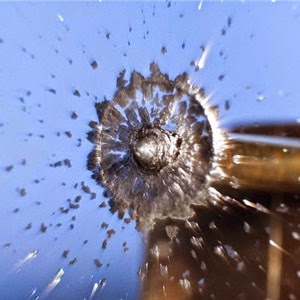Understanding Bullet Impacts

Overview
Whether for recreation, competition, training, hunting or personal defense, this ballistic series has focused on the myriad of aspects that affect a projectile's flight to target in order to provide a better understanding and help you choose the right firearm/ammunition combination to safely and consistently place your shots on target and achieve the desired ballistic effects. From the mechanical interactions internal to the firearm to the atmospheric and physical conditions that affect projectile flight, this series has provided information necessary to harness mechanical precision into shooter accuracy. Now, we will discuss projectile impacts on target.Since recreational and competitive shooters are primarily focused on measuring the effectiveness of their skill and technique by scoring shots on paper, cardboard, or interactive targets, terminal ballistics is simply a factor of hitting the target for score. For hunters, military/law enforcement, and personal defenders, on the other hand, the projectile's ultimate effect is eminently important since it is the sole reason for weapon employment. Although the conditions for weapon employment are much different in these latter cases, the desired result is the same… rapid incapacitation with as few shots fired as possible!
This rapid incapacitation is a factor of shot placement combined with velocity, kinetic energy, projectile weight, projectile shape and construction, caliber, and range to target as well as the nature of the target itself. In order to move forward with the discussion, we need to first discuss some terms and concepts common to both hunting and personal defense.
Terms and Concepts
- Caliber - diameter of a projectile
- Mass - in the most general terms, this is the weight of the projectile
- Velocity - this is the instantaneous speed at which the projectile is moving. Projectiles exit the firearm bore with an initial velocity which immediately begins to slow down due to air resistance and drag.
- Ballistic Coefficient - based on the shape and construction of the projectile, this number describes how well the projectile travels through the air and preserves its velocity. Read More »
About Author
Howard Hall - Range Master


No comments:
Post a Comment